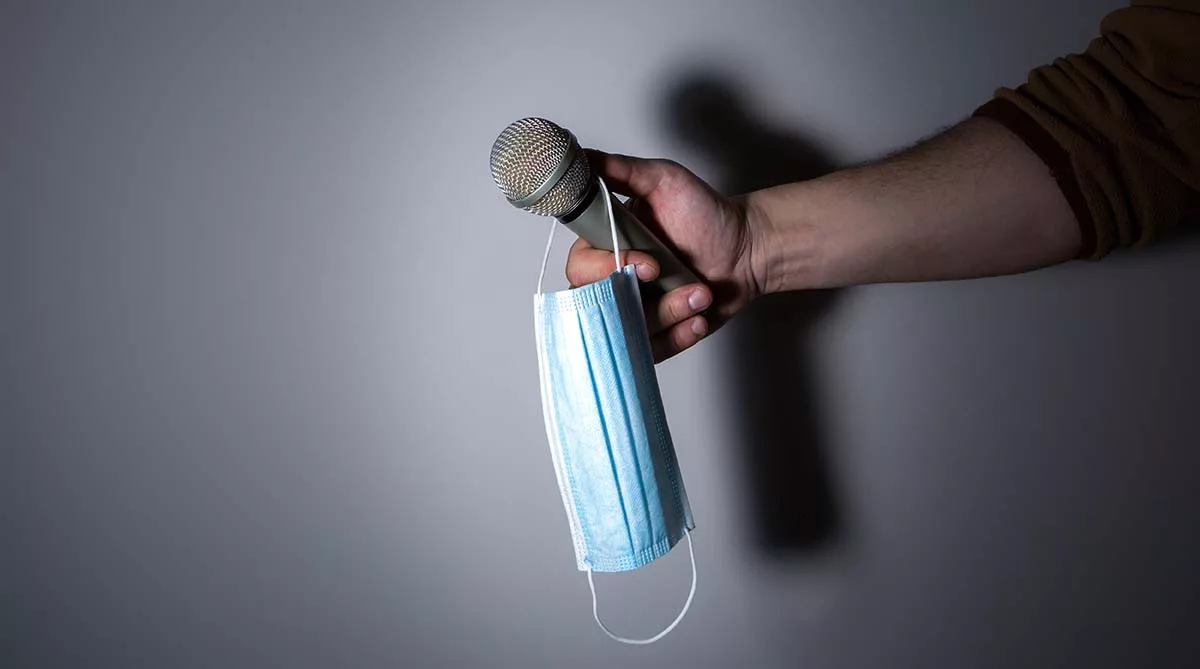By Sara Huffman
One of the trickiest things for PR professionals to do is break through a particularly hectic news cycle. The ever-changing, often harrowing COVID-19 news cycle has kept many in the public relations industry on their toes for more than a year, making it challenging to find thoughtful, authentic, and helpful ways to secure earned media for their clients.
The Pollack Group’s (TPG) President, Stefan Pollack, recently spoke during the 2021 Earned Media Mastery Summit about ways to secure quality media mentions during news cycles that are moving at breakneck speed. Here are some of the key takeaways from that conversation:
Find your place in the news cycle
As laid out in an agency post from last year, news cycles typically go through three stages: Mirror, Picture, and Window.
In the Mirror stage, the news media directly reports what is happening, thus holding up a “mirror.” Mirror-type stories involving the COVID-19 crisis involve climbing infection and death rates, new information about vaccines, new epicenters for the virus, new sheltering-in-place orders, or when those orders are lifted. In the Picture stage, the focus is on a broader “picture” of the situation at hand: how people are reacting, the business impact, and the human impact. Finally, in the Window stage, the news cycle looks toward the future and reports how life will change. Stories usually involve experts making predictions about the needed changes society will have to make, how we will make those changes, and what this crisis has taught us.
Typically, news cycles go through these stages completely and leave, making room for new news. But with the COVID-19 crisis, the stages have been repeating and doubling back in waves, spikes, and valleys.
“I think we find ourselves in a confluence of new stages of [COVID-19] news cycles,” said Pollack. “We may be dealing with breaking news on one front, but still working out the ramifications of another one that just happened at the same time.”
As a result of how the media is covering the COVID-19 crisis, Pollack believes this unpredictable cycle through stages, will likely be the future of news media for some time. “As more time passes, the picture will become more narrowly focused as the media kind of zooms in or out on particular verticals or populations being affected by the pandemic,” he added.
To stay nimble, Pollack suggests PR professionals dig deep to find ways they can help their clients contribute authentically to any stage of the news cycle. This can be:
1. If they have hard data, statistics, or any other piece of hard news they can provide to the media as a resource
2. If they can provide any specialized expertise, or
3. If they offer a product or service that will be meaningful to those impacted.
Be an expert – but only if you can do so authentically
Above all, and perhaps most importantly, is making sure a client’s message is authentic and genuinely helpful in times of crisis.
“The media and the public in general are not interested in shallow gestures or meaningless communications,” said Pollack. “Inauthenticity is really bad for our brand perception at best, but at worst, it could completely sink a company in the middle of a crisis.”
Pollack suggested clients perform a “gut check” before putting out any kind of messaging, to make sure they have something helpful to contribute to the conversation. PR professionals should encourage their clients to do so, since the alternative could be disastrous for the client’s reputation.

Pollack suggested that it would be good for both, PR professionals and their clients, to ask themselves: “Is this a ‘get out of the way’ moment and let other people be heard, or can we actually do something really meaningful here?”
Be agile (even more so than usual)
Pollack pointed to several campaigns TPG has done during the pandemic, including one for Barco, makers of high-quality apparel for healthcare professionals. The company pledged to donate 10,000 scrubs per month for the duration of the pandemic, and in less than 48 hours of that initial pledge, Barco surpassed 20,000 requests for scrubs. The surge in donation requests was backed by strong media relations, and within 72 hours, the campaign received over one billion impressions.
“By us just doing this simple, kind act on behalf of our client, we found ourselves breaking through the news cycle,” said Pollack.
One industry where the news cycle shifted quickly from Mirror to Picture was travel, specifically how safe it was to rent a car. With the help of TPG, Avis and Budget Group formed a coalition and were able to jump-start early conversations in the media about what they were doing to keep both customers and employees safe.
Pollack said the newly formed coalition was able to speak to all the rapidly changing safety standards being implemented at the company as they were being created.
“It hadn’t been done by anybody yet. So, in partnership with our client, the coalition announced what we call the AVIS Safety Pledge and the Budget Worry Free Promise that would raise the bar for cleanliness, disinfection, and safety in the rental car industry in the light of COVID,” said Pollack.
When it comes to consumers, aim for “sensory overload”
As the world starts to take tentative steps toward the post-pandemic new normal, Pollack points out that consumers are hungering to use all of their senses when they engage with brands. “Consumers have pent-up demand to use all of their senses when they’re engaging with brands. And the brands that are trying to figure that out are the ones that are meeting with the most success.”
Pollack pointed to the wildly popular Van Gogh art exhibit currently traveling across the country with all the pent-up demand for tickets that accompanies it.
“It’s just opened here in Los Angeles, and you can’t book a ticket until January of next year, if at all,” said Pollack.
According to Pollack, that kind of “sensory overload” should be something PR professionals will need to bring to their tactics if they want to break through the constant churn of breaking news and consumers’ fragmented attention spans.






